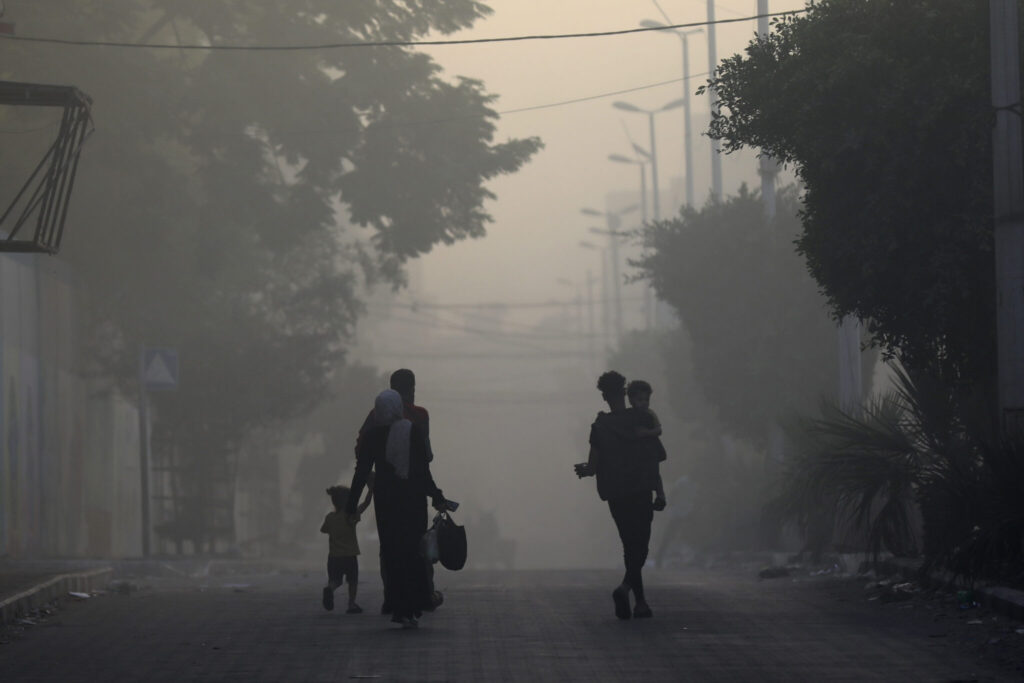Israel’s military offensive has turned much of northern Gaza into an uninhabitable moonscape. Whole neighborhoods have been erased. Homes, schools and hospitals have been blasted by airstrikes and scorched by tank fire. Some buildings are still standing, but most are battered shells.
Quick Read
- Northern Gaza, including Gaza City, devastated by Israeli military offensive, resembling an uninhabitable moonscape.
- Homes, schools, and hospitals in northern Gaza destroyed; remaining buildings are mostly damaged shells.
- Nearly 1 million Palestinians fled the north, with many having nowhere to return.
- Yousef Hammash, an aid worker, expresses despair over the future for his children in Gaza.
- Israeli army’s use of heavy explosives in residential areas results in over 13,000 Palestinian deaths and massive destruction.
- Israel claims its actions are due to Hamas using civilian sites for operations, a claim Hamas denies.
- Mahmoud Jamal, a taxi driver, describes extensive damage in Beit Hanoun.
- Emily Tripp of Airwars states Israel’s bombardment is one of the most intense since World War II.
- Northern Gaza transformed into a “ghost town,” according to Mkhaimer Abusada, a political scientist.
- Satellite data shows significant damage to buildings across northern Gaza.
- Raphael Cohen of RAND Corporation predicts displaced people living in tents for extended periods.
- 27 of 35 hospitals in Gaza out of operation; critical infrastructure destroyed.
- Over 41,000 homes in Gaza uninhabitable, representing 45% of total housing stock.
- Mohammed al-Hadad from Shati refugee camp narrates the extensive war damage.
- Southern Gaza spared heaviest attacks initially, but damage increasing in areas like Khan Younis.
- Israel urges residents in southern Gaza to move to Muwasi along the coast.
- A proposed four-day truce aims to facilitate humanitarian aid and prisoner exchange.
- Tareq Hajjaj, a journalist, compares the situation to the 1948 Palestinian exodus, the “nakba.”
- The 2014 Israel-Hamas war’s destruction in areas like Shijaiyah still unrepaired.
- Giulia Marini of Al Mezan highlights the enormous scale of destruction and long-term reconstruction needs.
- Uncertainty over who will lead the reconstruction efforts.
- Israeli Prime Minister and American officials propose different scenarios for Gaza’s future governance.
- Yasser Elsheshtawy of Columbia University suggests reconstruction could improve Gaza’s infrastructure and society.
- The war leaves Gaza traumatized, with a population burdened by memories of destruction.
The Associated Press has the story:
Gaza became a moonscape in war. Many fear it will remain uninhabitable
Newslooks- JERUSALEM (AP)
Israel’s military offensive has turned much of northern Gaza into an uninhabitable moonscape. Whole neighborhoods have been erased. Homes, schools and hospitals have been blasted by airstrikes and scorched by tank fire. Some buildings are still standing, but most are battered shells.
Nearly 1 million Palestinians have fled the north, including its urban center, Gaza City, as ground combat intensified. When the war ends, any relief will quickly be overshadowed by dread as displaced families come to terms with the scale of the calamity and what it means for their future.
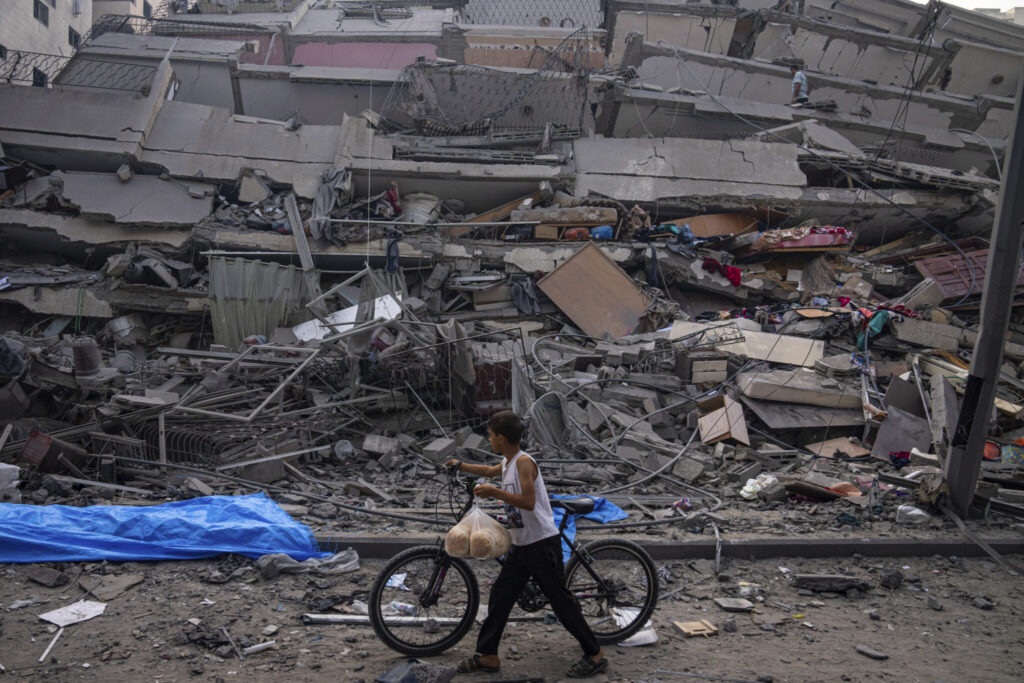
Where would they live? Who would eventually run Gaza and pick up the pieces?
“I want to go home even if I have to sleep on the rubble of my house,” said Yousef Hammash, an aid worker with the Norwegian Refugee Council who fled the ruins of the urban refugee camp of Jabaliya for southern Gaza. “But I don’t see a future for my children here.”
The Israeli army’s use of powerful explosives in tightly packed residential areas — which Israel describes as the unavoidable outcome of Hamas using civilian sites as cover for its operations — has killed over 13,000 Palestinians and led to staggering destruction. Hamas denies the claim and accuses Israel of recklessly bombing civilians.
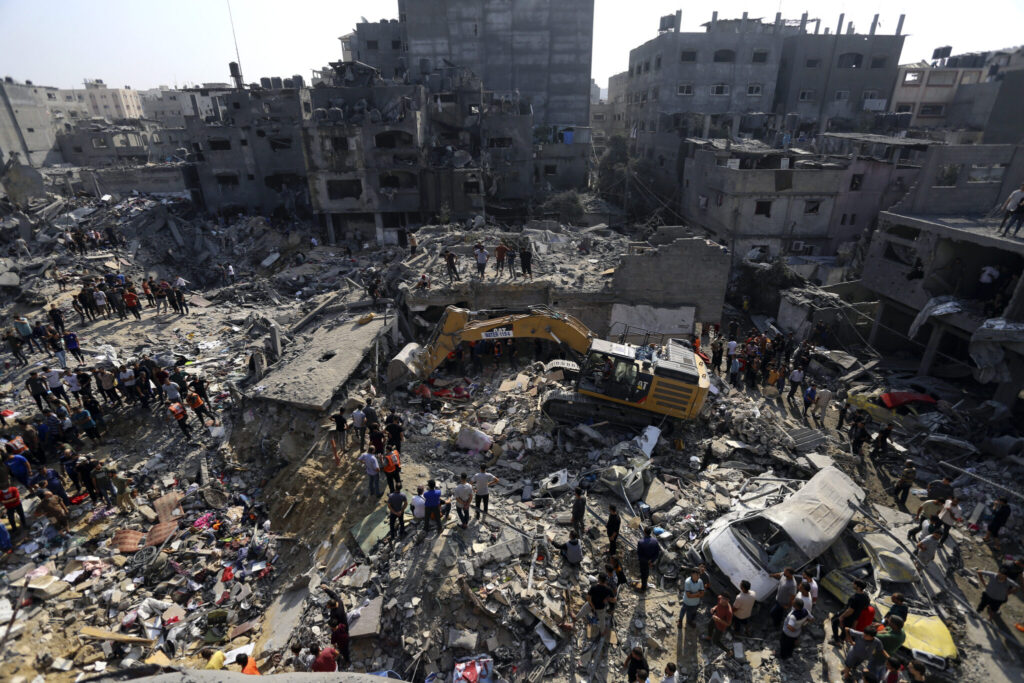
“When I left, I couldn’t tell which street or intersection I was passing,” said Mahmoud Jamal, a 31-year-old taxi driver who fled his northern hometown of Beit Hanoun this month. He described apartment buildings resembling open-air parking garages.
Israel’s bombardment has become one of the most intense air campaigns since World War II, said Emily Tripp, director of Airwars, a London-based conflict monitor. In the seven weeks since Hamas’ unprecedented Oct. 7 attack, Israel unleashed more munitions than the United States did in any given year of its bombing campaign against the Islamic State group — a barrage the U.N describes as the deadliest urban campaign since World War II.
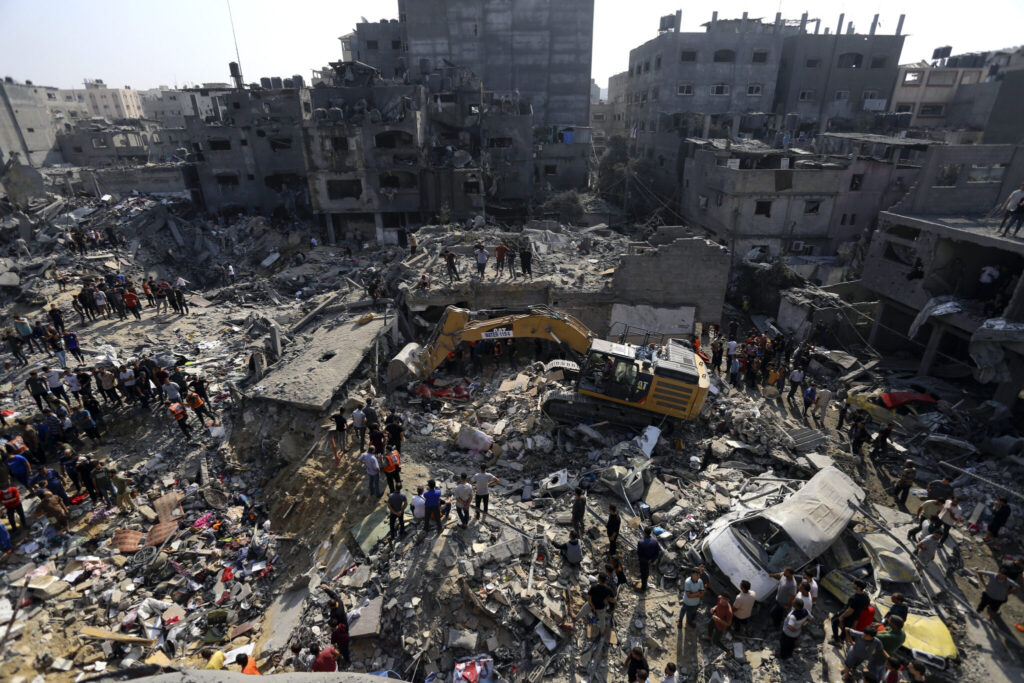
In Israel’s grainy thermal footage of airstrikes targeting Hamas tunnels, fireballs obliterate everything in sight. Videos by Hamas’ military wing feature fighters with rocked-propelled grenades trekking through smoke-filled streets. Fortified bulldozers have cleared land for Israeli tanks.
“The north of Gaza has been turned into one big ghost town,” said Mkhaimer Abusada, a political scientist at Al-Azhar University in Gaza City who fled to Egypt last week. “People have nothing to return to.”
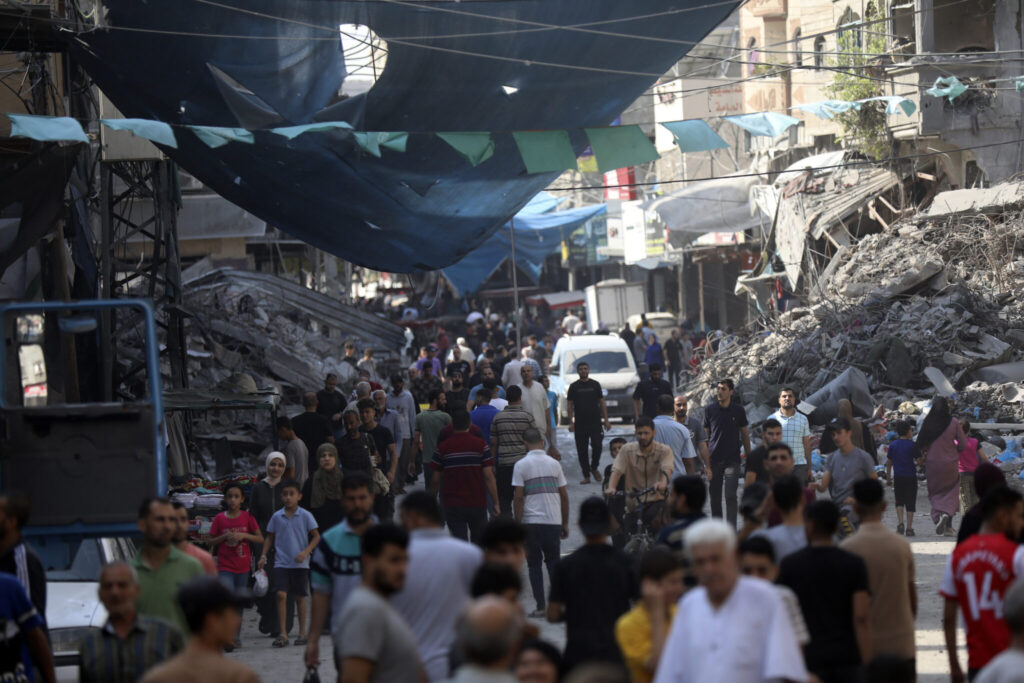
About half of all buildings across northern Gaza have been damaged or destroyed, according to an analysis of Copernicus Sentinel-1 satellite data by Corey Scher of the CUNY Graduate Center and Jamon Van Den Hoek of Oregon State University. With the U.N. estimating 1.7 million people are newly homeless, many wonder if Gaza will ever recover.
“You’ll end up having displaced people living in tents for a long time,” said Raphael Cohen, a senior political scientist at the RAND Corporation, a research group.
The war has knocked 27 of 35 hospitals across Gaza out of operation, according to the World Health Organization. The destruction of other critical infrastructure has consequences for years to come.
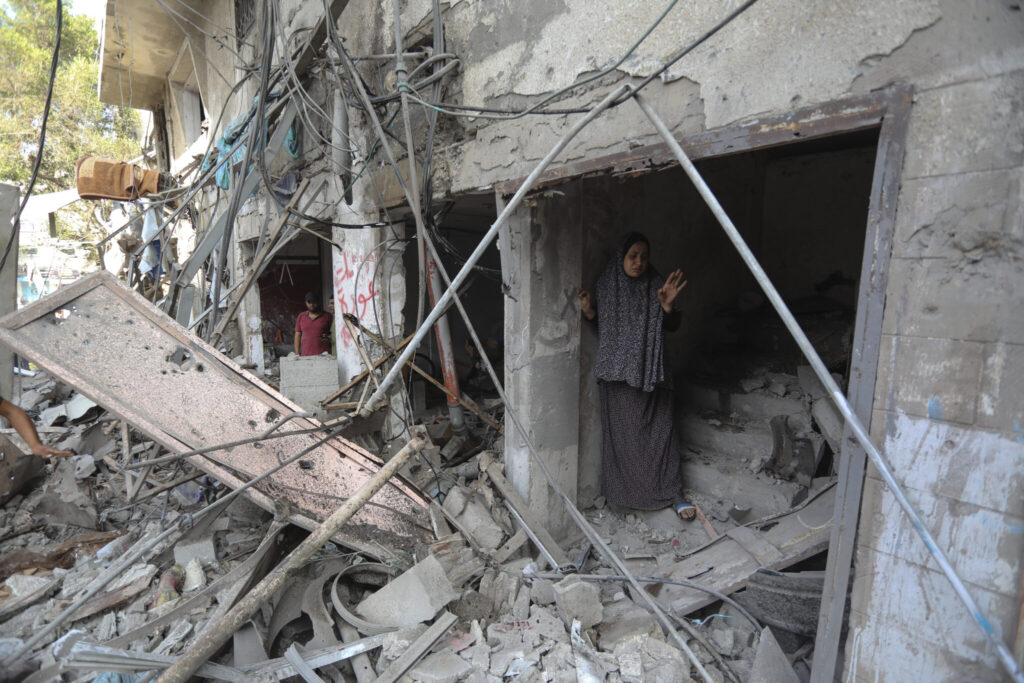
“Bakeries and grain mills have been destroyed, agriculture, water and sanitation facilities,” said Scott Paul, a senior humanitarian policy adviser for Oxfam America. “You need more than four walls and a ceiling for a place to be habitable, and in many cases people don’t even have that.”
Across the entire enclave, over 41,000 homes — 45% of Gaza’s total housing stock — are too destroyed to be lived in, according to the U.N.
“All I left at home was dead bodies and rubble,” said Mohammed al-Hadad, a 28-year-old party planner who fled Shati refugee camp along Gaza City’s shoreline. Shati sustained nearly 14,000 incidents of war damage — varying from an airstrike crater to a collapsed building — over just 0.5 square kilometers (0.2 square miles), the satellite data analysis shows.
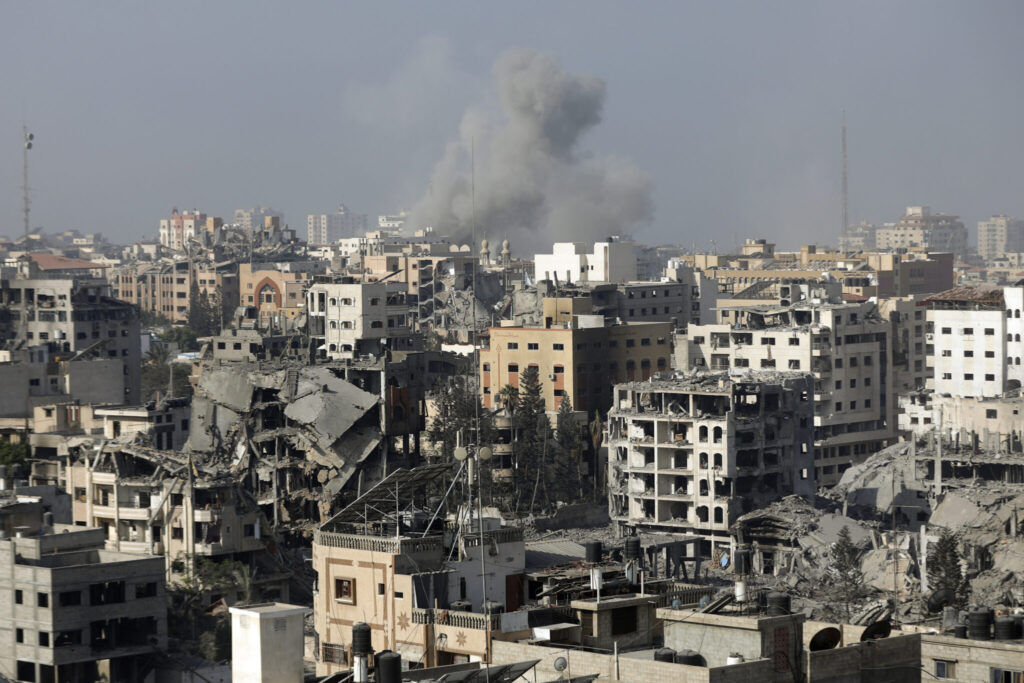
Southern Gaza — where scarce food, water and fuel has spawned a humanitarian crisis — has been spared the heaviest firepower, according to the analysis.
But that’s changing. In the past two weeks, satellite data shows a spike in damage across the southern town of Khan Younis. Residents say the military has showered eastern parts of town with evacuation warnings.
Israel has urged those in southern Gaza to move again, toward a slice of territory called Muwasi along the coast. As of Thursday, Israel and Hamas were still working out the details of a four-day truce that would allow more humanitarian aid to enter Gaza and facilitate an exchange of Palestinian prisoners for Israeli hostages.
Displaced Palestinians said four days won’t be enough.
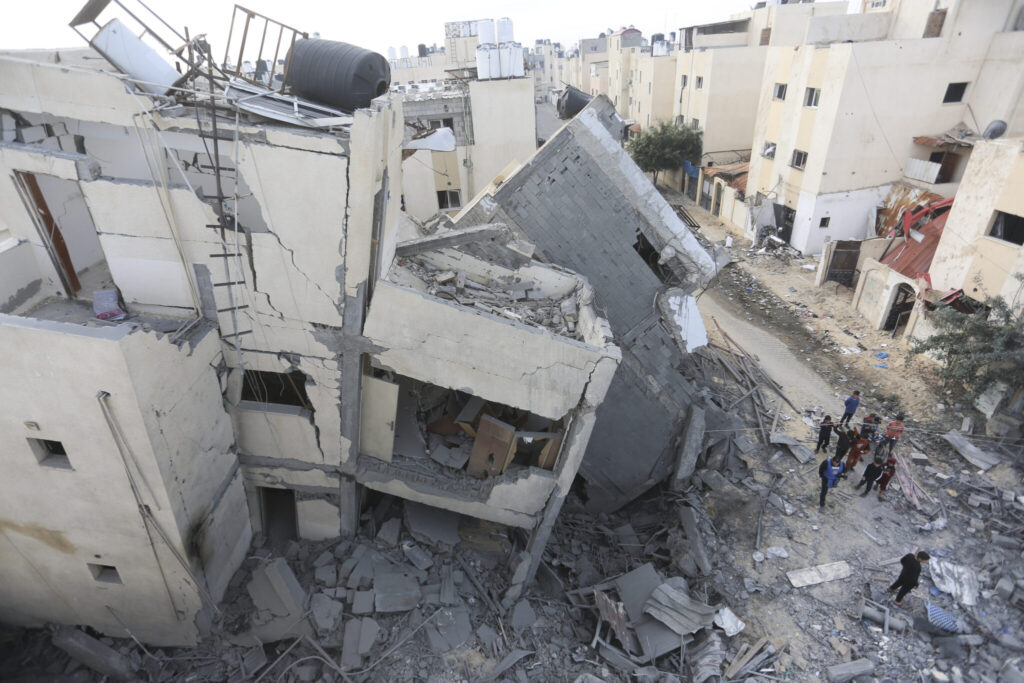
“This is our nakba,” said 32-year-old journalist Tareq Hajjaj, referring to the mass displacement of an estimated 700,000 Palestinians during the 1948 war surrounding Israel’s creation — an exodus Palestinians call the “nakba,” or “catastrophe.”
Although publicly Palestinians reject the idea of being transferred outside Gaza, some privately admit they cannot stay, even after the war ends.
“We will never return home,” said Hajjaj, who fled his home in Shijaiyah in eastern Gaza City. “Those who stay here will face the most horrific situation they could imagine.”
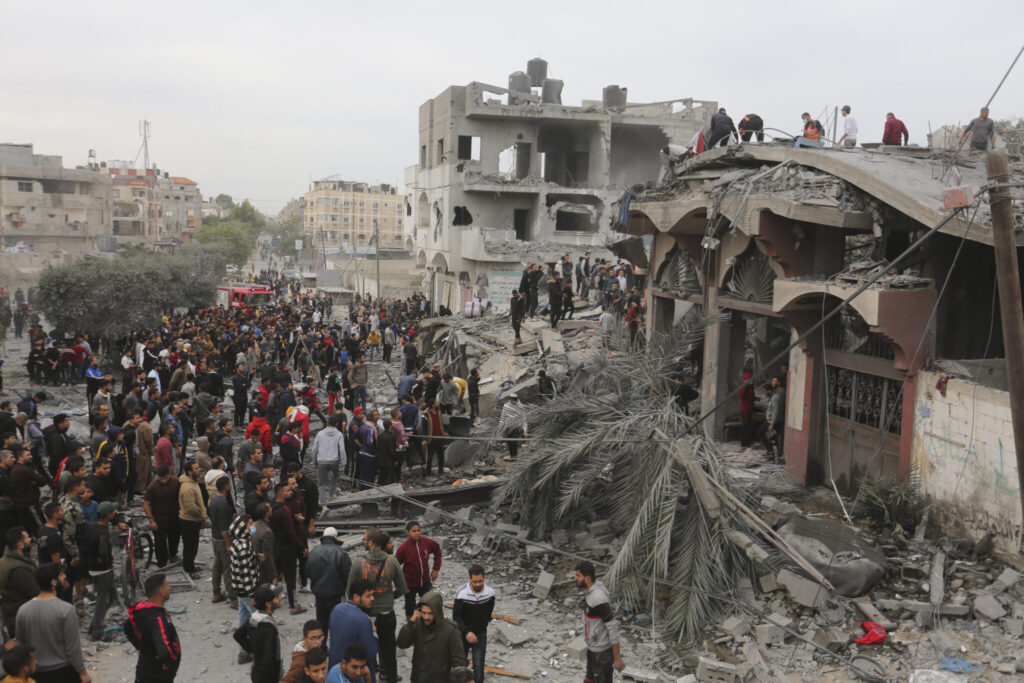
The 2014 Israel-Hamas war leveled Shijaiyah, turning the neighborhood into fields of inert gray rubble. The $5 billion reconstruction effort there and across Gaza remains unfinished to this day.
“This time the scale of destruction is exponentially higher,” said Giulia Marini, international advocacy officer at Palestinian rights group Al Mezan. “It will take decades for Gaza to go back to where it was before.”
It remains unclear who will take responsibility for that task. At the recent security summit in Bahrain, Jordanian Foreign Minister Ayman Safadi vowed Arab states would not “come and clean the mess after Israel.”
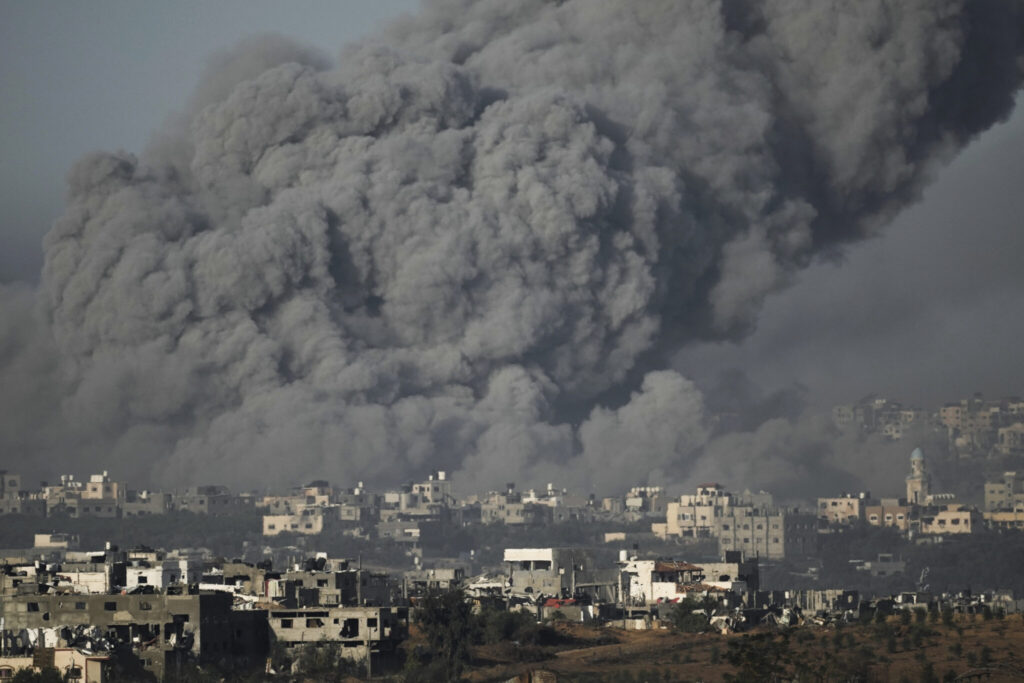
Israeli Prime Minister Benjamin Netanyahu wants the army to restore security, and American officials have pushed the seemingly unlikely scenario of the West Bank-based Palestinian Authority taking over the strip.
Palestinian President Mahmoud Abbas, regarded by many Palestinians as weak, has dismissed that idea in the absence of Israeli efforts toward a two-state solution.
Despite the war’s horrors, Yasser Elsheshtawy, a professor of architecture at Columbia University, hopes reconstruction could offer an opportunity to turn Gaza’s ramshackle refugee camps and long deteriorating infrastructure into “something more habitable and equitable and humane,” including public parks and a revitalized seafront.
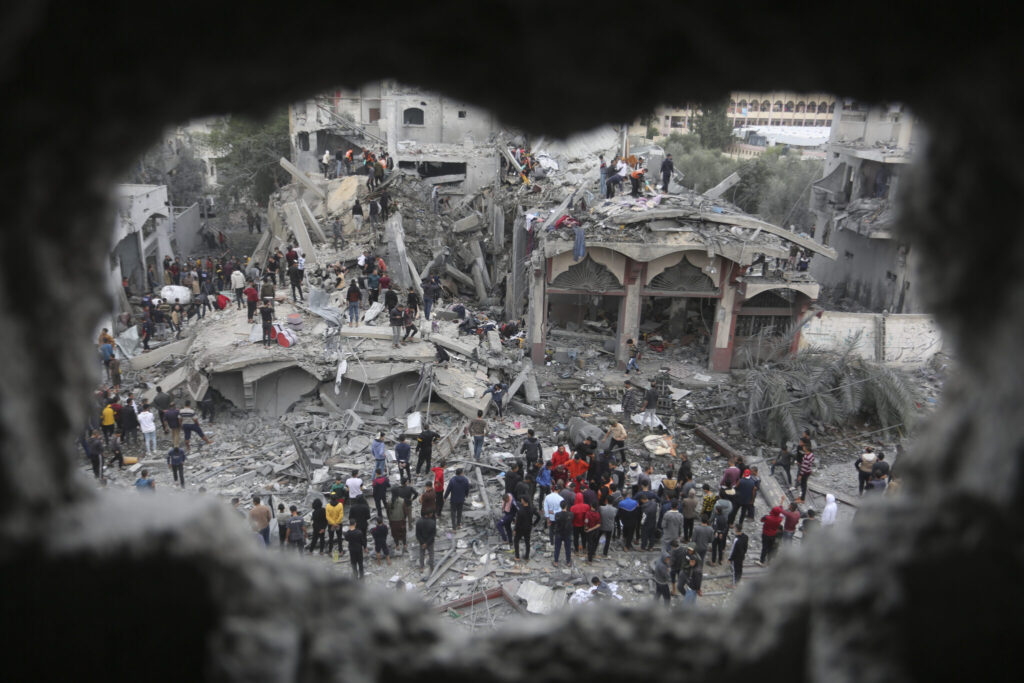
But Palestinians say it’s not only shattered infrastructure that requires rebuilding but a traumatized society.
“Gaza has become a very scary place,” Abusada said. “It will always be full of memories of death and destruction.”

